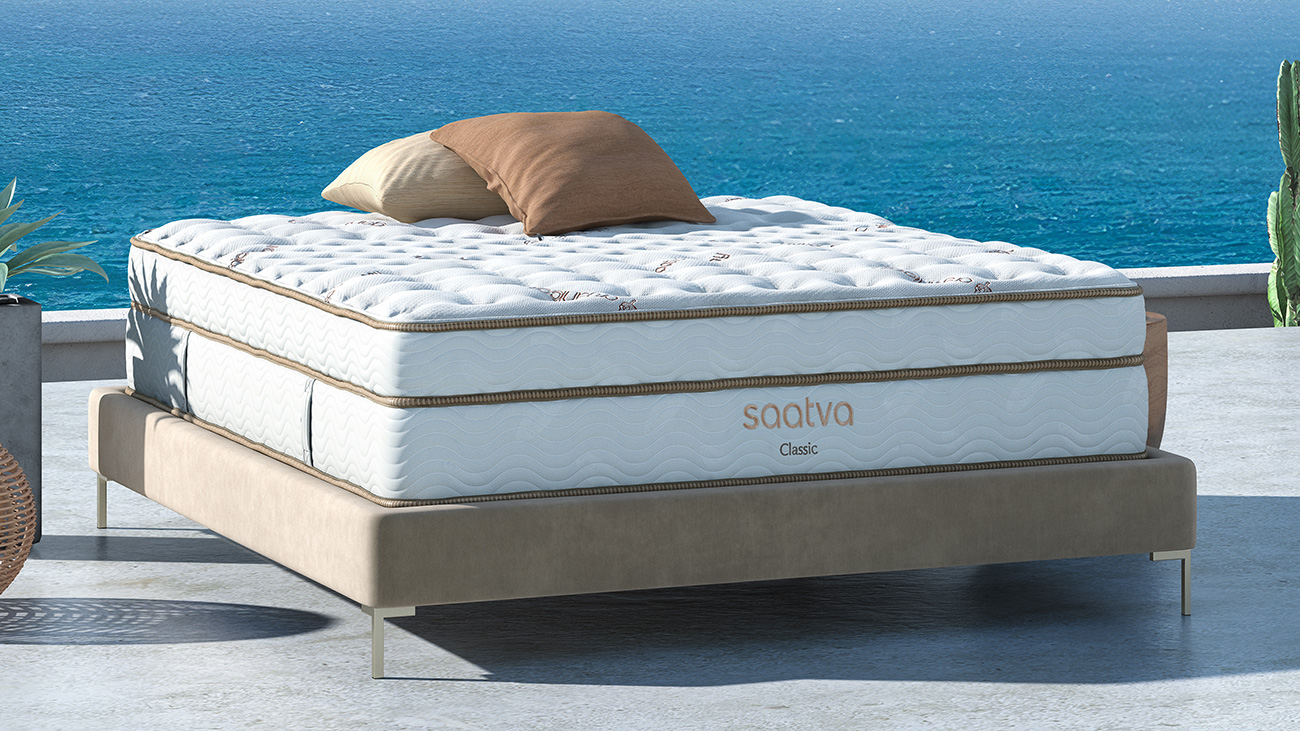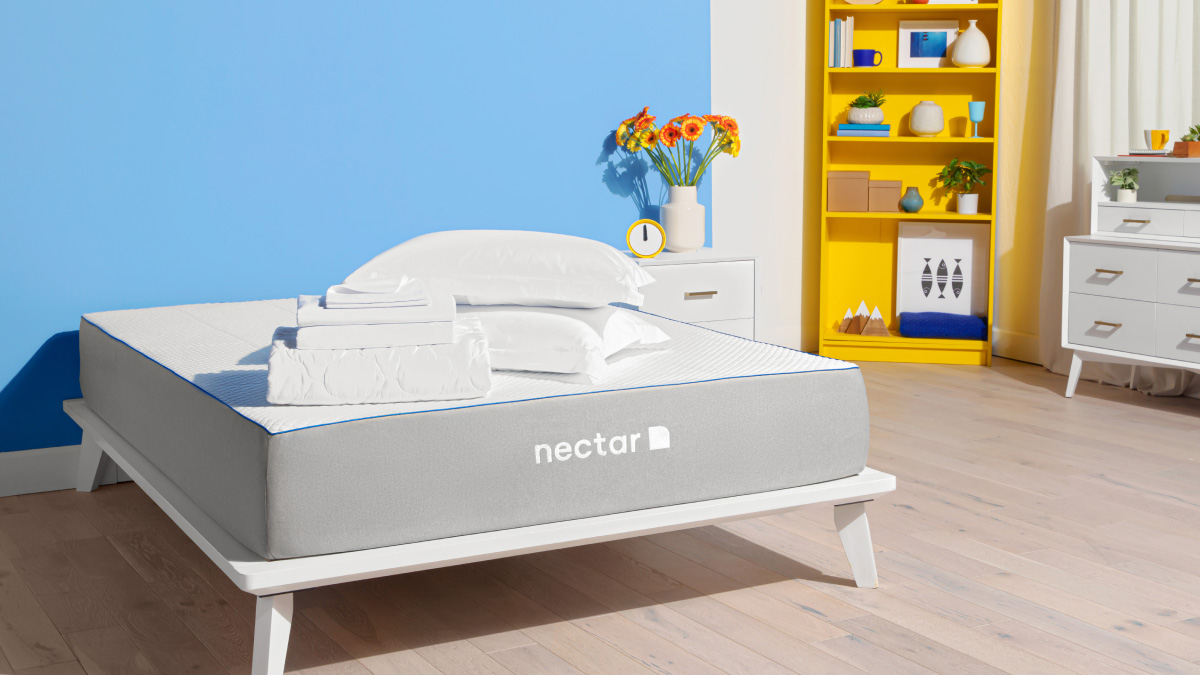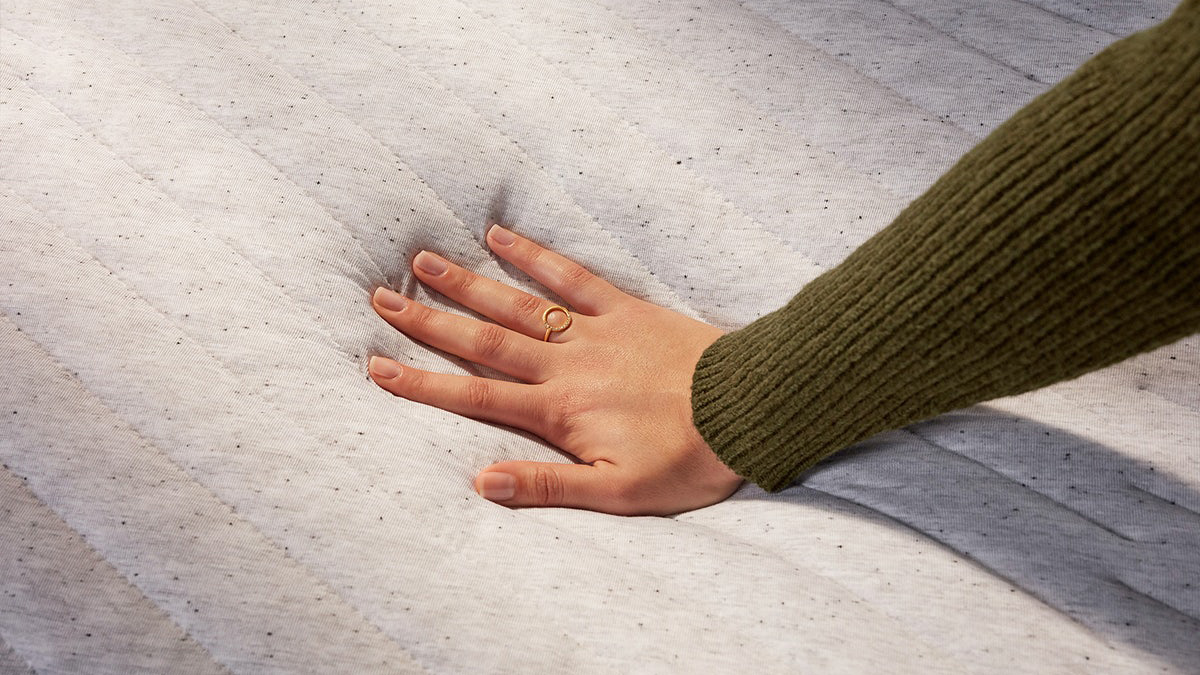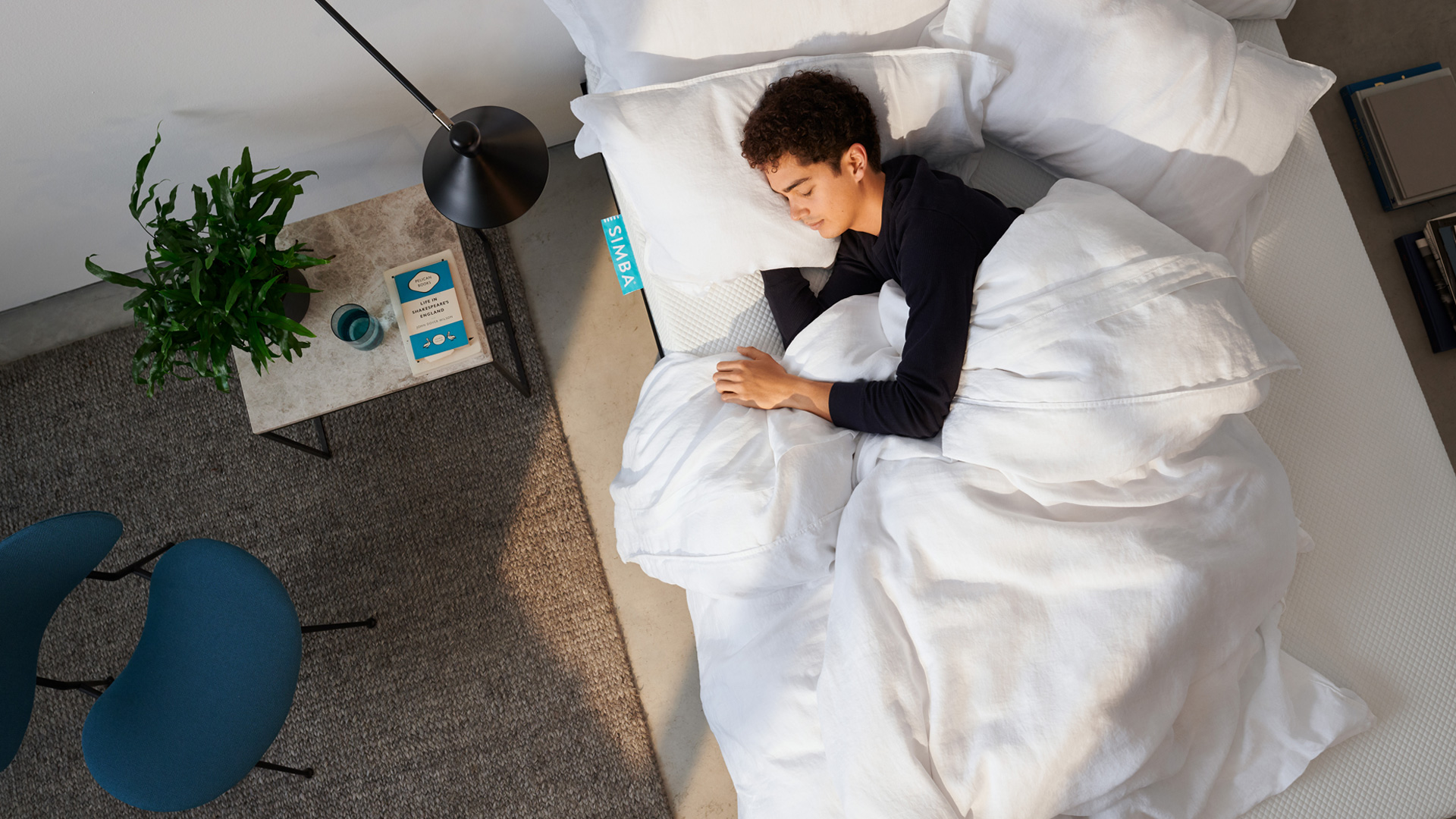Better Homes & Gardens Peaceful Comfort 8 Memory Foam Mattress
Memory foam or pocket sprung (or innerspring)? It's one of the biggest decisions you have to make when choosing a new mattress. In this memory foam vs springs mattress article, we'll dig into what the difference is, the pros and cons of each, and which is best for which type of sleeper.
Choosing the right mattress really does matter. Over the average lifetime, we spend about 26 years in bed, so when you think of it that way, choosing the best mattress is pretty important. If you use a sleep tracker, you can see how restless you are at night, sometimes. A good night's sleep is essential to health and wellness – without it, say hello to aches and pains, poor concentration, low mood and even anxiety.
- Looking for a bargain? Here are the best Black Friday mattress deals
- Add one of the best best mattress protectors to your wish list
- And don't forget to buy the best pillow to support you as you sleep
With so many mattresses on offer, and endless cheap mattress deals to consider, it can feel a little overwhelming. That's why we're here to help you make the right decision. We'll explain the different types of mattresses available, to help you choose a memory foam vs spring mattress. Read on for all the facts you need to know about memory foam mattresses and pocket spring (or innerspring) mattresses.
Mattress types explained
Pocket sprung (innerspring) mattress
A pocket spring (or pocket sprung) mattress can have anything from 1,000 to 2,000 individual springs that move separately from each other (anything with fewer than 1,000 springs will be poor quality). These mattresses are usually stuffed with a mixture of man-made and organic materials, ranging from synthetic cotton to lamb's wool.
Note: some materials are allergens, for some people. So if you have sensitive skin, look for a mattress with a hypoallergenic surface, or use a mattress topper or extra thick bedding to avoid any skin reactions.

(Image credit: Saavta)
In the US, our top-ranking innerspring mattress is the Saatva Classic, which includes two layers of recycled steel springs (check out our Saatva discount codes and deals page for the best prices). In the UK we love the Sealy 1400 Nostromo, which features seven zones of support.
Memory foam mattress
Memory foam mattresses use body heat to soften and mould to the contours of your body. When you get out of bed, or change position, they recover their normal shape. Also known as viscoelastic foam, memory foam was first designed in the US, by NASA, in 1966, and has been the big thing in mattress tech for a few years now. Many of the best pillows are now made with memory foam, too.

(Image credit: Nectar)
One of our favourite memory foam option right now is the Nectar mattress. It's comfortable, supportive, and the cooling tech is very effective (browse the best Nectar discount codes and deals for the cheapest prices). If you're shopping in the UK, we'd also recommend the Emma Original, winner of a perfect 5* review and two T3 awards. And again, here's our guide to the best Emma mattress deals.
Hybrid mattress
As the name suggests, a hybrid mattress combines the classic pocket sprung construction with comforting top layers of foam. It offers multiple forms of support and comfort, usually with some mixture of memory foam, gel and innerspring coil technology. This is a great way to get the best of both worlds, and in fact many of our favourite mattresses right now are hybrids (we especially love the Eve Premium Hybrid in the UK, and the Zoma Hybrid in the US).
Memory foam vs springs: Which is best for which sleeping style?
Pocket sprung mattress
If you like to feel on top of the bed, rather than in it, then pocket sprung is ideal. These mattresses are designed for even weight distribution, with most offering the same level of resistance all over. If you sleep on your side, you may find a sprung mattress puts pressure on your shoulder, which can be uncomfortable over long periods. However, make sure you pay attention to the 'firmness' rating given by the manufacturer (or check our review for a more objective rating) – innerspring mattresses and be soft or firm.
Memory foam mattress
Memory foam moulds around the natural shape of your body for a personalised sleep surface. This custom support helps relieve pressure points, which can help with aching joints and sore muscles. Memory foam mattresses can be a good choice for anyone with back pain, because the material is designed to mould to the natural curve of the spine, regardless of your sleeping position.
Unlike the innerspring, you'll typically feel more enveloped by this kind of mattress than on top of it. This can work well for those who sleep on their side, as it relieves the pressure on the shoulders. Note though, the amount to which you 'sink in' is very dependent on the particular brand you choose. Brands like Tempur are known for moulding around the form of your body, while something like an Emma mattress will push your body back towards the surface more).
Like to sleep on your stomach? You can choose either, but those with breasts might find memory foam is more comfortable, as it'll mould to your shape more. Whichever style you choose, you'll likely want a firmer mattress, to provide the adequate support.
Pocket springs vs memory foam: Comfort and bounce
Pocket sprung
Best for: Easy movement
Pocket sprung mattresses are super bouncy, and as we've already explained, tend to make the sleeper feel more on top of the bed than in it. The lift of an innerspring means they have excellent mobility, which means you can move around easily on them.
Not so good for: Back pain
If you suffer from back pain, innersprings might not be the best choice, as the uniform sleep surface won't adapt to the contours of your body to ensure everywhere is equally supported. Because each spring pushes back with the same force, pressure points are inevitable.

(Image credit: Saatva)
Memory foam
Best for: Minimising motion transfer
Memory foam tends to be great at minimising motion transfer, so you won't notice your partner's every move. This is a big selling point for those who share a bed with a fidget!
Not so good for: Movement and bounce
Memory foam mattresses have virtually no bounce, as the material is designed to absorb and contour your body. With certain brands, this can create a 'quicksand' feeling, which can make it feel more difficult to move around and change positions. Some love this feeling (it can promote a more restful sleep), while others do not. Pay attention to how 'firm' your memory foam mattress is – and if you're concerned, choosing a hybrid mattress can be a great way to get the best of both worlds.

(Image credit: Casper)
Memory foam vs springs: Temperature
Which type of mattress keeps you cool – but not too cold – all night long? They may have lots of layers of springs and stuffing, but innerspring or pocket sprung mattresses are also incredibly breathable. They help regulate body temperature by allowing a natural airflow between you and the mattress, making for a cooler sleep than you would get with memory foam mattresses.
In contrast, memory foam mattresses are known for being temperature-sensitive – they don't just mould to your shape; they warm up in response to your body heat. Many sleepers complain that memory foam mattresses make them feel too hot, especially in the summer. This is because the dense materials used make ventilation difficult. As the memory foam creates a mould around the natural contours of the body, the material traps the heat, instead of letting it circulate.
But new tech has meant that many companies, such as Simba, Tempur-Pedic and Nectar are infusing their memory foam layers with cooling elements, such as gel or copper to help regulate temperature (like this Nectar Memory Foam Mattress, which has an Adaptive Cooling Cover as the top layer). As a result, some are very effective at not trapping heat – although the bottom line is, a memory foam mattress is still unlikely to sleep cooler than a sprung one.
Memory foam vs springs: Price guide
Whichever type of mattress you choose, buy the best you can afford. And bear in mind there are lots of cheap mattress deals on all year round that can make a pricey mattress much more reasonable.
Typically, a memory foam mattress might be a little pricier than a pocket sprung one, while a hybrid might be more expensive again. With memory foam, cost is typically directly associated with quality because the materials are pricey, not the workforce. You can pick up really very cheap versions of types of mattress – bear in mind though, you might be sacrificing longevity by going for a bargain-basement option. The widget below shows the best prices on our favourite spring, memory foam and hybrid options right now.
Memory foam vs pocket spring: Durability
How often should you change your mattress? Probably slightly more regularly than you'd expect. However, choosing the right material can help extend the life your mattress. Also note that good mattress companies will offer generous warranties (the standard is 10 years, although some offer lifetime warranties) for peace of mind.
Pocket sprung mattresses typically age quicker than memory foam, and cheaper spring mattresses can sag over time. In fact an innerspring can lose 16 per cent of its support in the first year alone, making the surface harder and less bouncy, and providing less support. But with a little care, you can make your innerspring mattress last a bit longer – just flip it over every month to improve shape and durability (check your mattress is designed to be flipped first).
A good quality memory foam mattress will typically last longer. Even with frequent use, these mattresses can last for up to 12 years. Compared with other types of mattress, they are typically far more resilient.
However, like anything, you get what you pay for: cheap memory foams can become misshapen over time, becoming softer and less effective at contouring to the shape of the body. Avoid this by turning the mattress to swap the head for the foot of the mattress every month or so.
Bug-free bonus: Memory foam mattresses are also resistant to pesky bed bugs: the dense structure of foam inhibits the growth of dust mites, as they simply can't survive in this material.

(Image credit: Simba )
Memory foam vs pocket sprung mattress: Verdict
Buying a mattress is a very personal choice. As we know, we spend so much time in bed, that the more you can invest in a good mattress, the better you will sleep. Restful sleep, in turn, has a knock-on effect on your overall health and wellbeing. So, which will you choose?
Pocket spring (innerspring) mattress
Best for:
- Breathable qualities – they keep you cool at night
- Firm support – the more springs, the more even the support
- Easy movement – you sleep on top rather than sinking in
- Lasts around 8 years or more if turned regularly
Memory foam mattress
Best for:
- Back and joint problems
- Allergies (no dust mites!)
- Movement isolation
- Chilly people – memory foam warms up in response to your body heat
- Lasting longest – a memory foam mattress should last up to 12 years
Better Homes & Gardens Peaceful Comfort 8 Memory Foam Mattress
Source: https://www.t3.com/au/features/memory-foam-vs-spring-mattress
Posted by: rommelcouldic.blogspot.com

0 Response to "Better Homes & Gardens Peaceful Comfort 8 Memory Foam Mattress"
Post a Comment